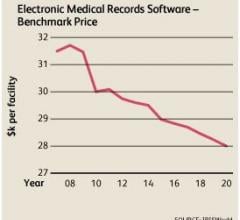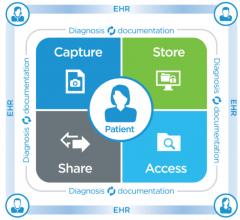If you enjoy this content, please share it with a colleague
RELATED CONTENT
Mammography has been the gold standard for breast cancer screening ever since it was proven to reduce mortality in clinical trials in the 1960s. A 2015 report from the U.S. Department of Health and Human Services (HHS) revealed, however, that only 66.8 percent of women age 40 and over — the demographic traditionally targeted for screening — had received a mammogram in the previous two years.1 Understanding of fibroglandular breast density and its impact on cancer detection, as well as new screening guidelines that challenge conventional wisdom, are among the factors impacting compliance rates, and they suggest that screening has evolved beyond the one-size-fits-all approach of using mammography alone.
Enterprise imaging as a concept has been around for several years, but many organizations are just turning their full attention to it now, according to Jef Williams, managing partner at Paragon Consulting Partners. This is because other health information technology (IT) endeavors have taken precedence, including electronic medical records (EMRs) and Meaningful Use. Now, as enterprise imaging comes to the forefront, Williams and other speakers at the 2016 annual meeting of the Association for Medical Imaging Management (AHRA) discussed the importance of having an enterprise imaging strategy and how to implement it.
For all the benefits of medical diagnostic imaging, radiation exposure to both the patient and the operator remains a major safety concern. Various studies have illustrated the harmful effects of excess radiation dose, but much is still uncertain as to its precise impact.
According to market research firm IBISWorld, the average price of electronic medical record (EMR) software is forecast to continue declining at an average annual rate of 0.7 percent through 2019.
The U.S. healthcare system’s ongoing transformation from a volume-based payment model to a value-based one is being guided by one central principle: better coordination of patient care.
How we store, access, and manage imaging information has never been more important, and complex, than it is now.
December 29, 2015 — The market analyst firm Research and Markets has released a report titled "Radiology Information ...
At RSNA 2015, Cerner demonstrated its RadNet Radiology Information System (RIS), which provides the tools to work more efficiently and help provide better outcomes for patients.
At the Radiological Society of North America (RSNA) 2015 annual meeting, Cerner showed its CareAware MultiMedia vendor neutral archive (VNA) platform, which allows management of multimedia such as images and video and integrates them with the electronic health record (EHR).
At the Radiological Society of North America (RSNA) 2015 annual meeting, Cerner displayed its Cerner SkyVue customizable image viewer framework.


 November 01, 2016
November 01, 2016 






